Sukau birding essentially means staying in a more-or-less comfortable lodge on the banks of the Kinatabagan river, and taking boat tours on more-or-less rickety boats on the river. The mosquitos and the heat and the sweat are free, the lodges are not. This is how it looks like:

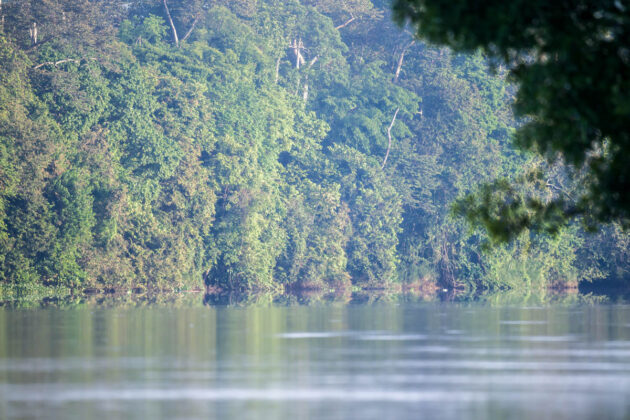
Or at sunset:
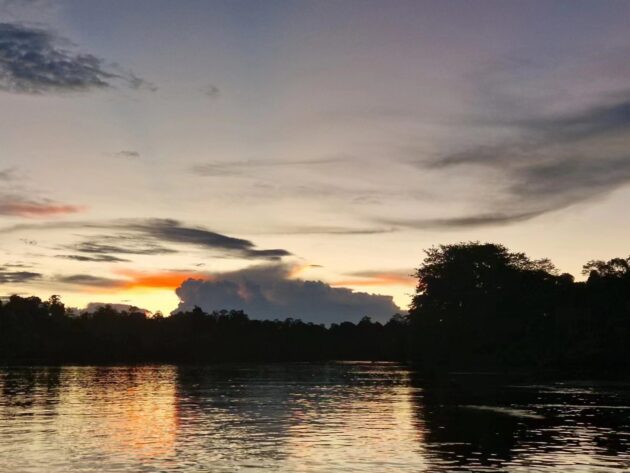
A species I did not come for from Shanghai is the Black-crowned Night Heron. Yes, we have them in Shanghai as well. Not sure why they spend time in Shanghai in winter when they could come here though, but then again, I usually do not understand most of the behavior of humans either.
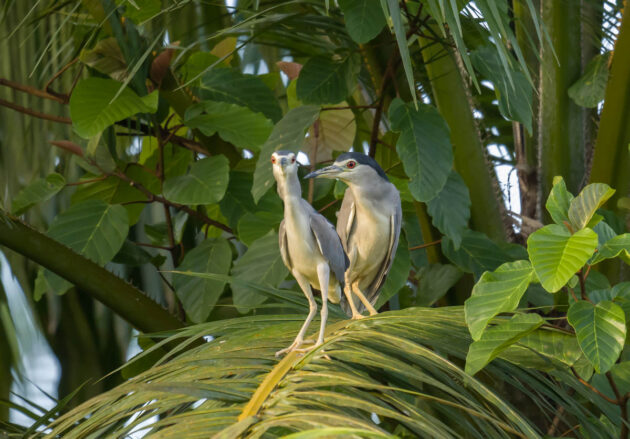
Blue-throated Bee-eaters build nests on sticks sticking out of the water. They look crap but presumably offer some protection for the chicks, though not from each other (see the murderous activities within the nests in my previous post).
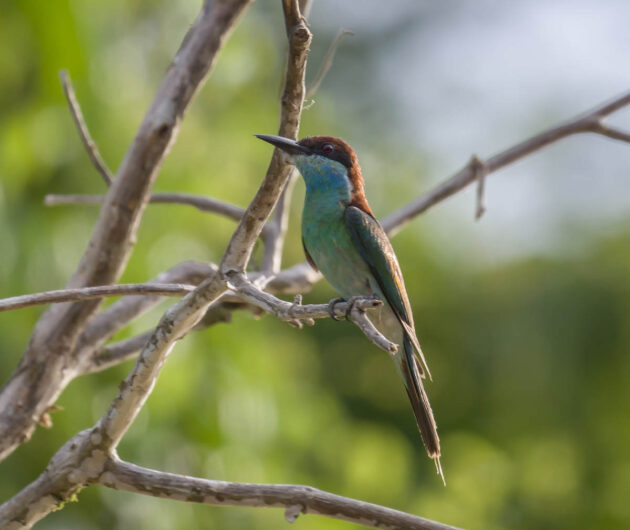
Because these nests look so bad, I took a bribe from the Association of Bornean Bee-eaters to not show them (actually, I just forgot to take a photo, stupid me). So, just photos of the birds themselves.
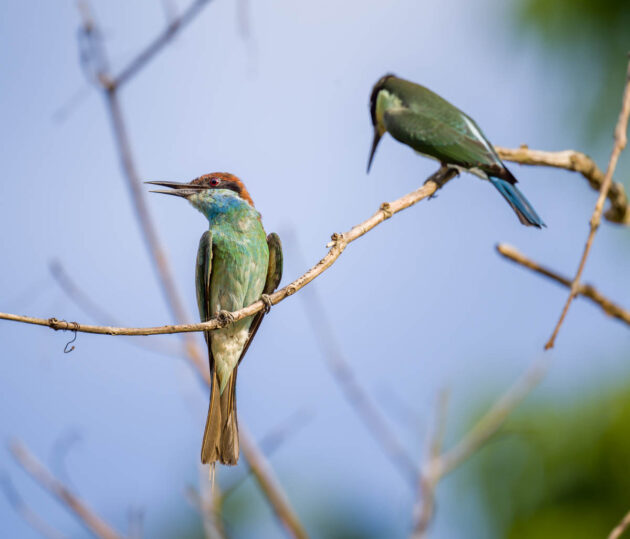
The juvenile in the back has just caught something. The parent must be so proud …
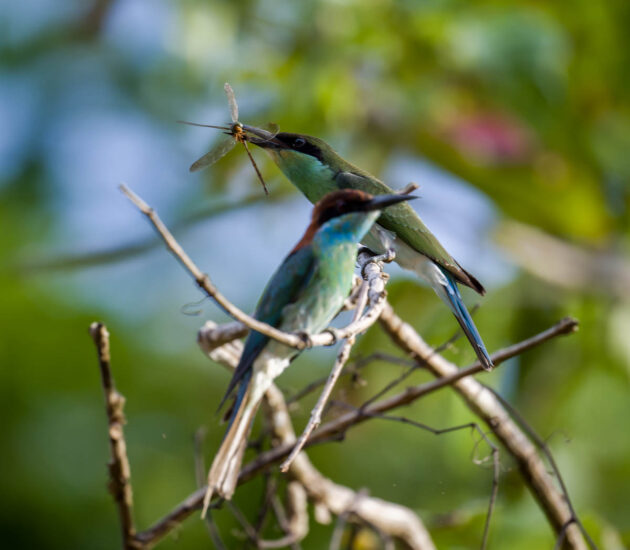
The Sabah Partridge is listed as Near Threatened. Its species name graydoni is in honor of Philip Newenham Graydon (1864-1940), a British planter in Sabah. Why that makes Mr. Graydon worthy of having a bird species named after him is a mystery to me.
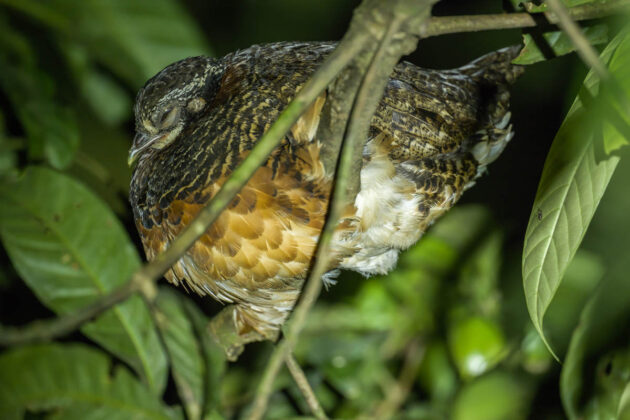
The HBW calls it a “boldly-marked partridge” while eBird goes for “intricately-patterned partridge” which is almost the opposite – check for yourself which one of the two descriptions is closer to the truth.
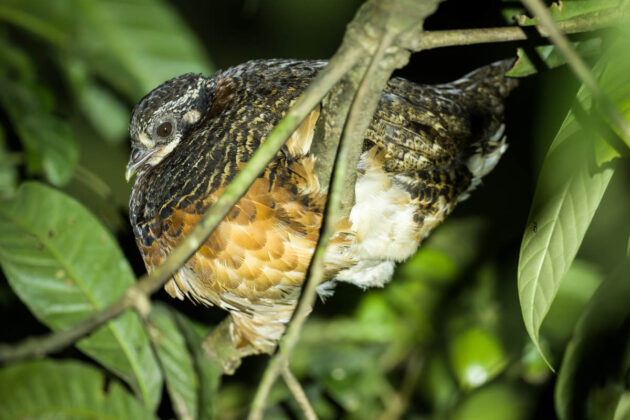
And if you are in Sabah, you can also check whether the bird is “uncommon … throughout its range” (eBird) or rather “locally common” (HBW).
Weirdly, a meta-analysis undertaken by Lim and Mojiol quoted in the HBW found “Sabah Partridge to be most abundant in commercial forest reserves, and less so in state-owned areas and protected reserves”. A bird with a strong belief in private property, maybe?
The Large Frogmouth is one of these wonderfully weird bird species that make birding such a joy, once you get over the heat and humidity and mosquitos and leeches of Borneo’s lowlands.
It is listed as Near Threatened – the HBW states that it is an “uncommon or rare bird that is almost certainly declining owing to destruction of its lowland-forest habitat”.
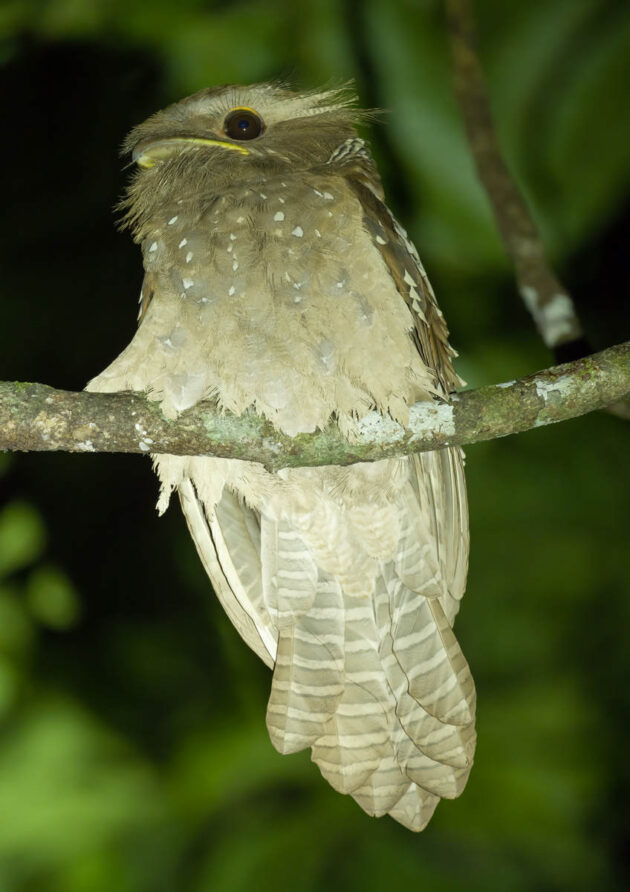
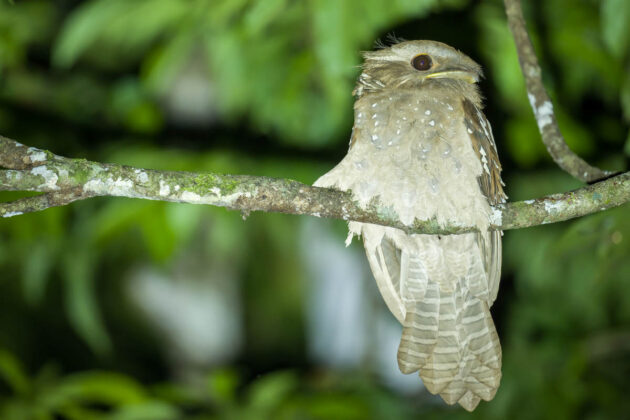
The HBW also remarks that there is “no obvious sexual dichromatism, although female is said to be often plainer and duller” – my advice to HBW staff is not to make such statements at parties, as this might make you relatively unpopular except with the most boorish of male guests.
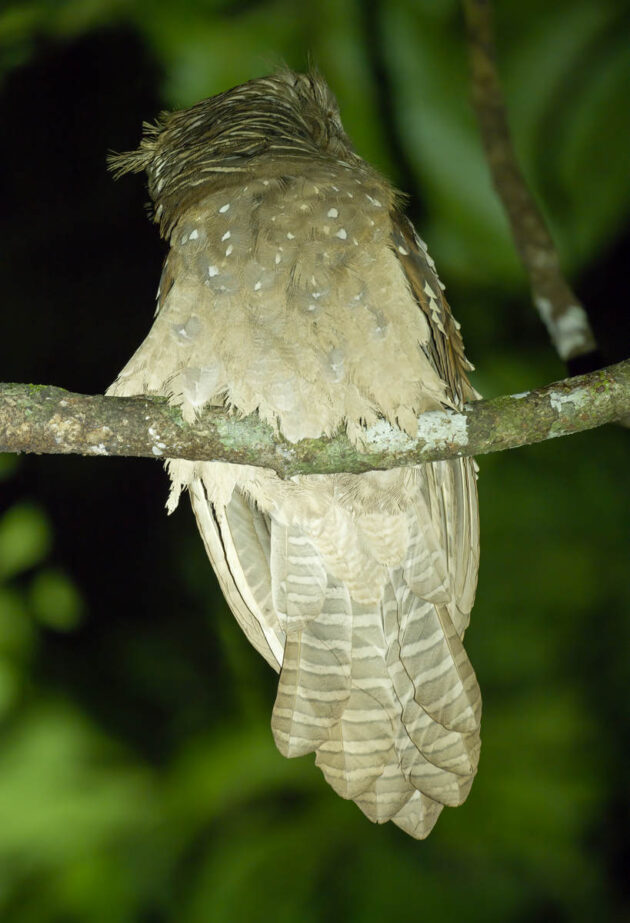
If you want to know what happened on August 31, 1984, I can name at least one event: In the Padang-Sugihan Wildlife Reserve in South Sumatra province, a Large Frogmouth was mobbed by a Greater Racket-tailed Drongo, as described here. At between 4 pm and 6 pm, to be exact. Of course, many people still know exactly what they did when this happened.
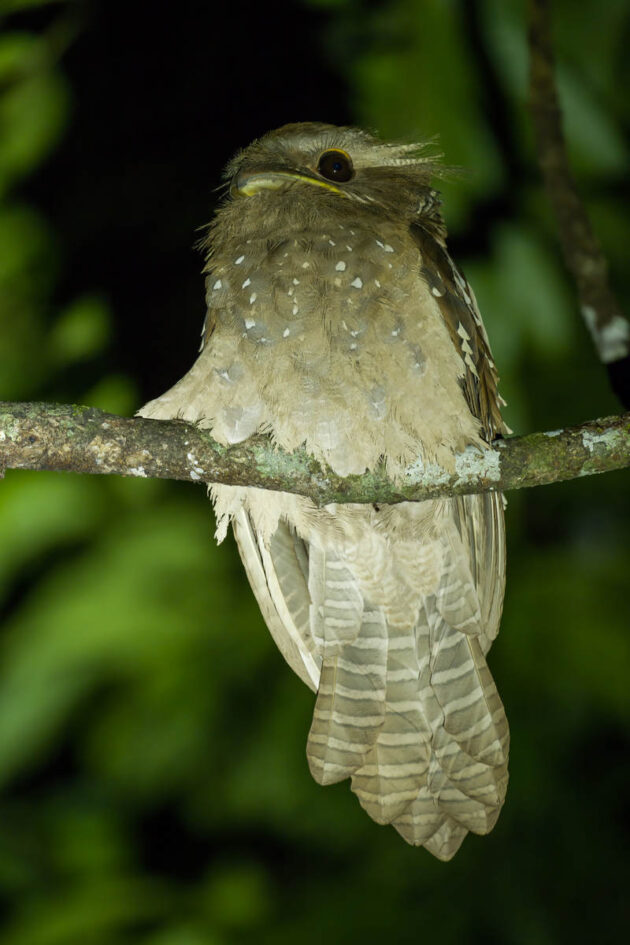
Apparently, when breeding, the two parents divide incubation duties, with one bird taking over the daytime duties and another one the nighttime. Consequently, a paper describing this talks of the “day shift” and the “night shift” bird. The paper is also worth checking out for some rather cute photos of the frogmouth chick.
For some, the glass of water is always half full. For others, it is always half-empty (I, being more realistic than most people, usually doubt there is any glass at all). Anyway, the Latin name of the Mangrove Blue Flycatcher translates as something like the Red-bellied Flycatcher (rufigaster is the species name). Different perspectives.
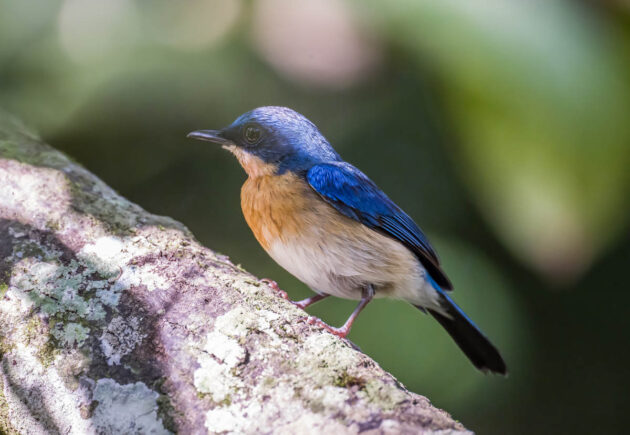
While it is a very attractive bird, its habitat in swamps and mangroves apparently makes it difficult for armchair ornithologists to study it, so there are few or no papers on the bird.
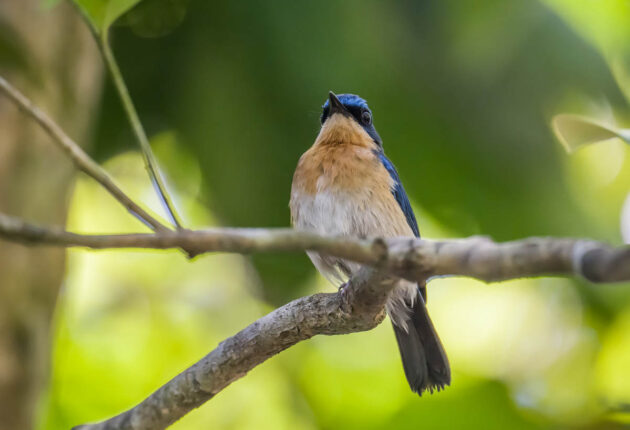
The hornbills of Sukau are featured in a separate post – they are one of the main attractions of this location though.
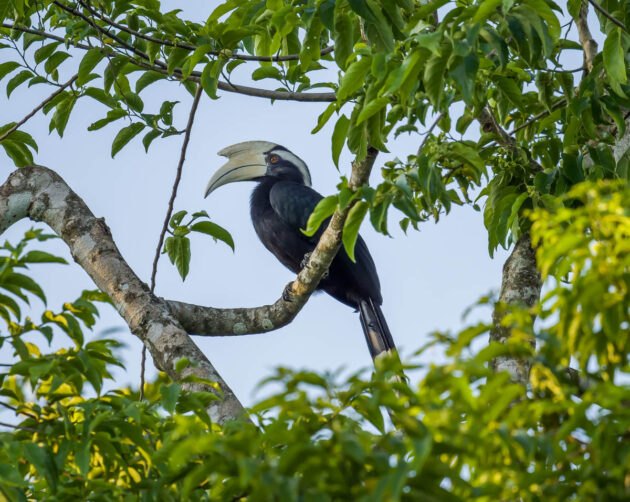
Ditto for Storm’s Stork.
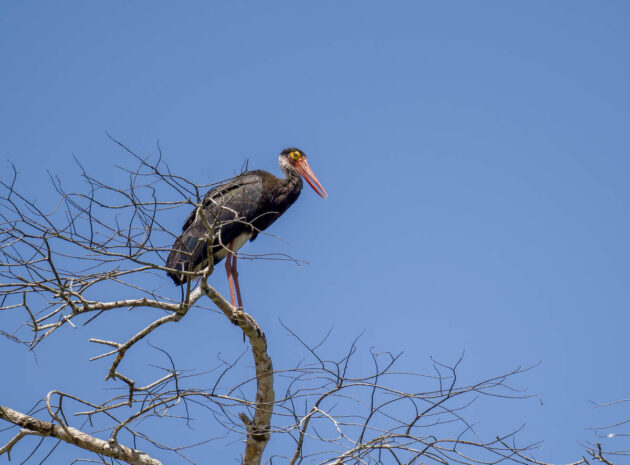
Blue-eared Kingfishers think that sustainability is very important. They frequently reuse nest holes, thus saving vital natural resources even though cleaning out the used nest hole takes about one week (source).
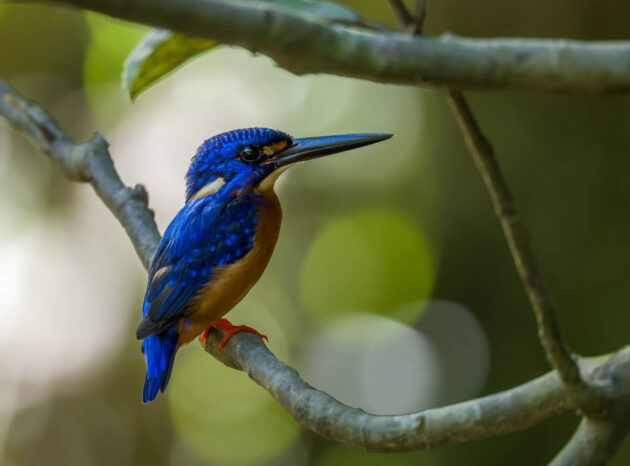
Unfortunately, the Latin species name meninting does not refer to a potential cruel Dutch governor with a sideline in naturalism but is just the Javanese name for the Deep-blue Kingfisher. One nice little story for my blog post lost.
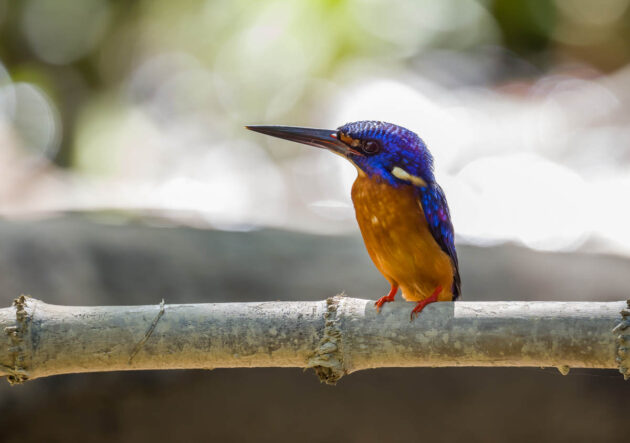
Like other kingfishers, Blue-eared Kingfishers nest in excavated tunnels – but compared to other kingfishers, these tunnels seem to be quite short with an average length of only 25 cm. A kingfisher with a somewhat deficient work ethic, I guess. Or speluncaphobia?
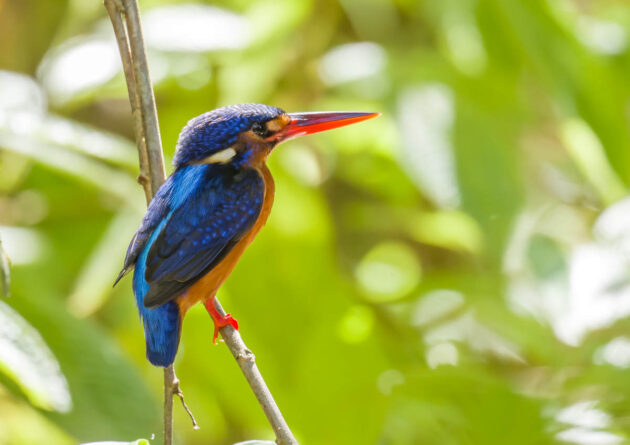
The Stork-billed Kingfisher is much bigger and easier to see.
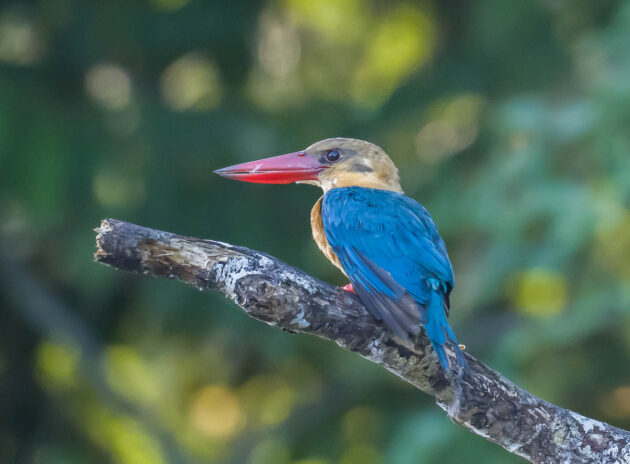
Some scientists at Chittagong University, Bangladesh observed the behavior of Stork-billed Kingfisher and Pied Kingfisher at – guess where – Chittagong University campus (presumably they have some problems expensing travel costs).
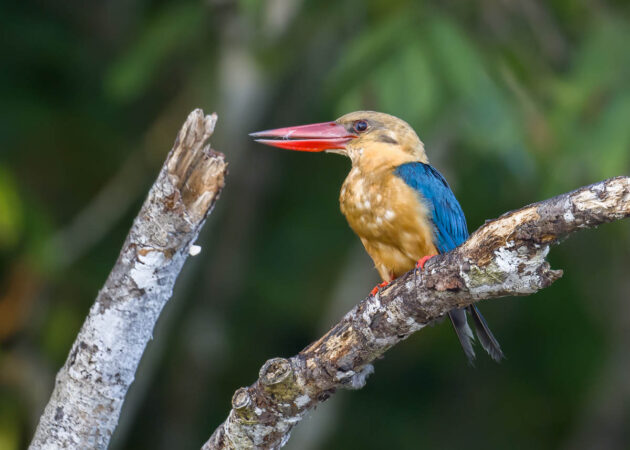
They observed the Pied Kingfisher undertaking 8 activities while the Stork-billed Kingfisher was observed performing only 6. The two missing ones were hovering (too big, too fat, too lazy, I guess) and bathing. The last point makes me worry a bit about getting too close to Stork-billed Kingfishers. Maybe they turn out to be quite smelly? I did not get close enough to find out though.
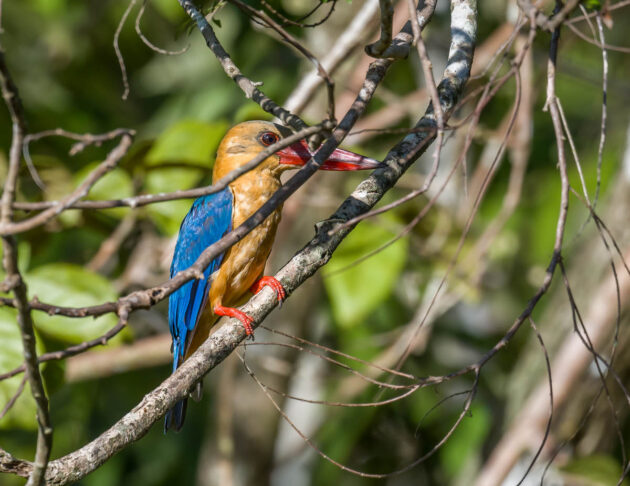
The Collared Kingfisher is even more common – it can frequently be seen sitting on wires and posts along the main roads.
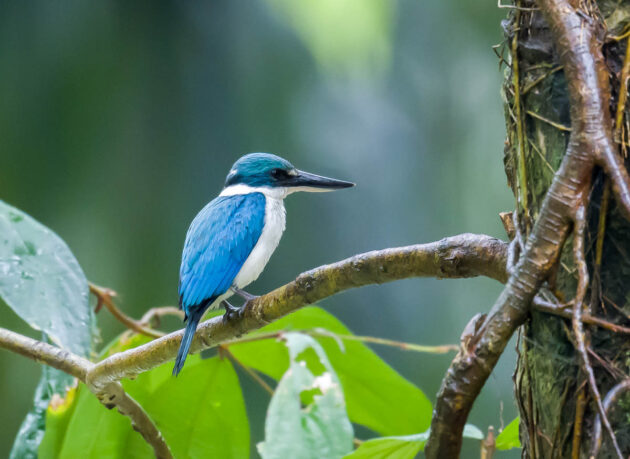
So common that my local bird guide actually gave the species as an example of a very common bird he was still happy to see during the COVID lockdown when it showed up in his backyard.
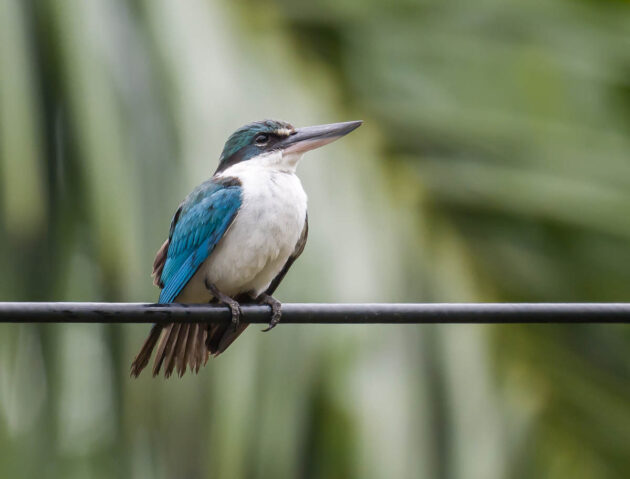
The resident fashion critic of eBird is not very impressed with the Orange-backed Woodpecker, stating that it is “dressed all in patchwork”.
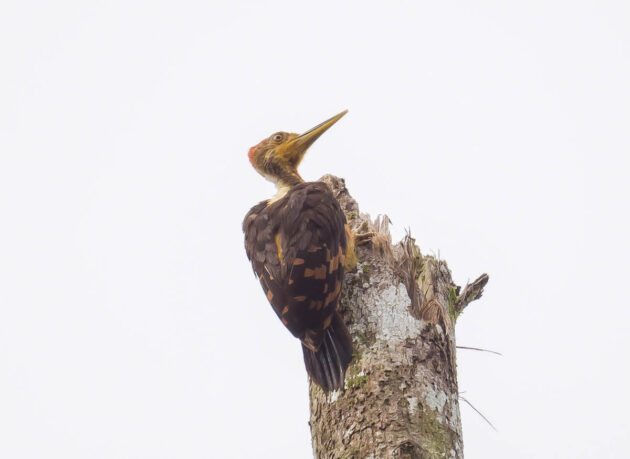
It has one of the more stupid-sounding genus names – Reinwardtipicus, which is made up of the name of Dutch naturalist Prof. Caspar Georg Carl Reinwardt and picus, which means woodpecker, with the ti that connects the two parts possibly also having some kind of meaning. This is only partly compensated by the species name validus (strong), of which presumably the species is quite proud of.
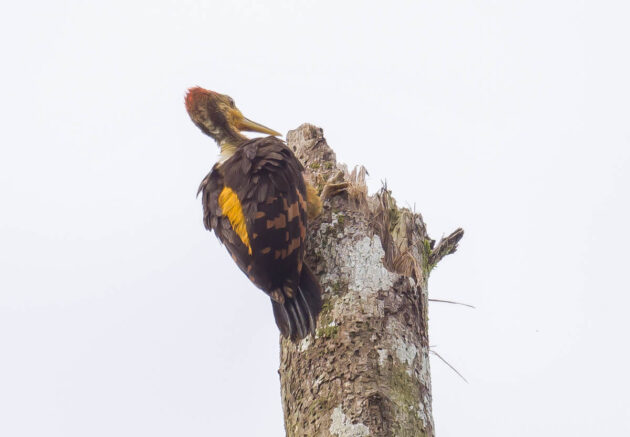
Perhaps not interesting to anybody except me, the HBW profile of the bird has a brief section on the author, Chuenchom Hansasuta, who received a Doctor of Dental Surgery from Chulalongkorn University in Bangkok. I remember that when I was still a research chemist developing dental materials, I once gave a presentation at that university, which was followed by my receiving a hideous and very colorful plate as a gift afterward. With a picture of the then-queen of Thailand on it, if I remember correctly. So, quite possibly that made me commit lese majeste when I conveniently “forgot” the plate in my hotel room when leaving Bangkok – a room in a hotel that was somewhat distinguished by all vaguely attractive young females entering the hotel having to leave their ID cards at the reception. In retrospect, it kind of makes me wonder what image the organizers who booked the hotel for me had of German academic visitors …
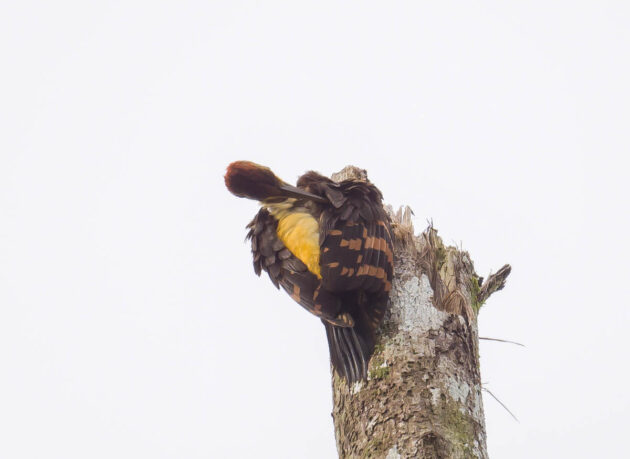
So much for my quasi-madeleine moment, though of course less emotionally attractive than the one described by Mr. Proust. Back to birds.
The Oriental Darter is classified as Near Threatened – the reasons are the usual ones: habitat loss, hunting, and pollution. Humankind, you did it again, congratulations.
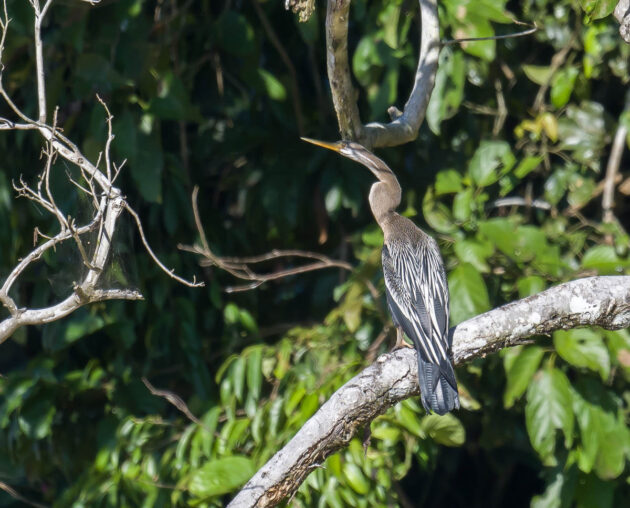
The Latin species name melanogaster highlights the black belly of the bird (melanos = black, gastros = belly). A friend of mine who is a bit scared of snakes thinks of it as the snakebird though, which is not unreasonable given the snake-like neck of the bird.
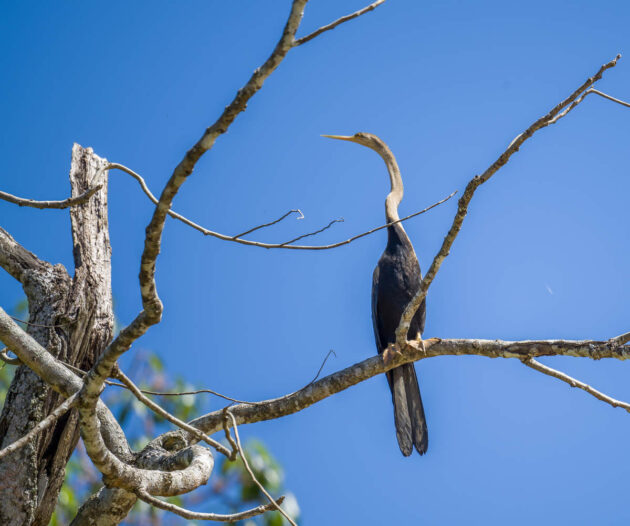
The Pacific Swallow is the resident swallow here – in winter, it is apparently joined by an abundance of barn swallows that do not enjoy the coldish winter in places such as Shanghai.
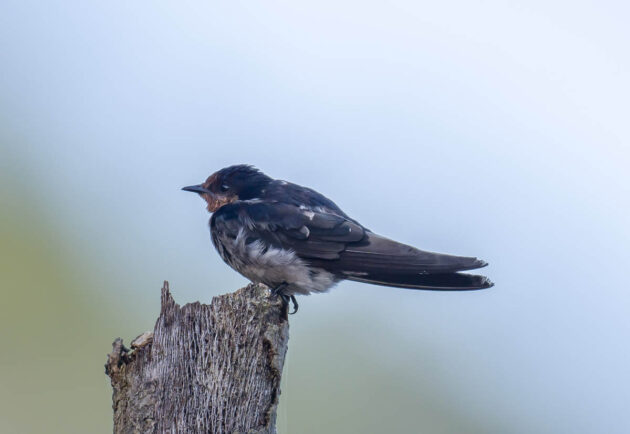
According to eBird, the barn swallow has longer outer tail feathers and a dark line separating the throat and breast which are lacking in the Pacific Swallow. However, it is best not to call a Pacific Swallow short-tailed as they might regard this as insulting, particularly the males.
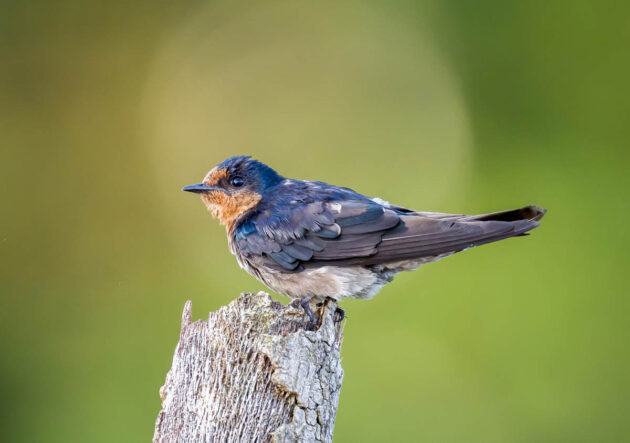
Purple Herons are not very common and quite shy in Shanghai while here, they behave like they own the place.
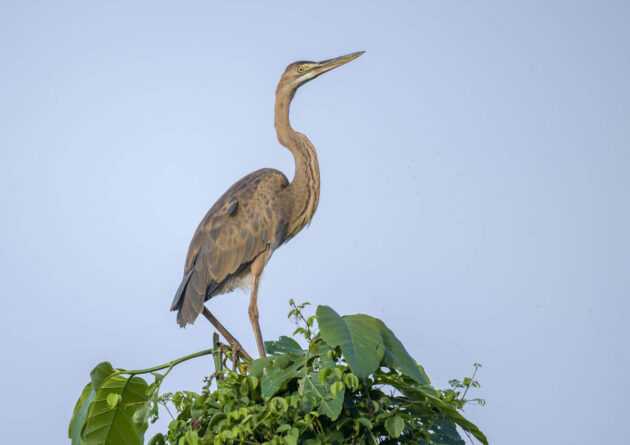
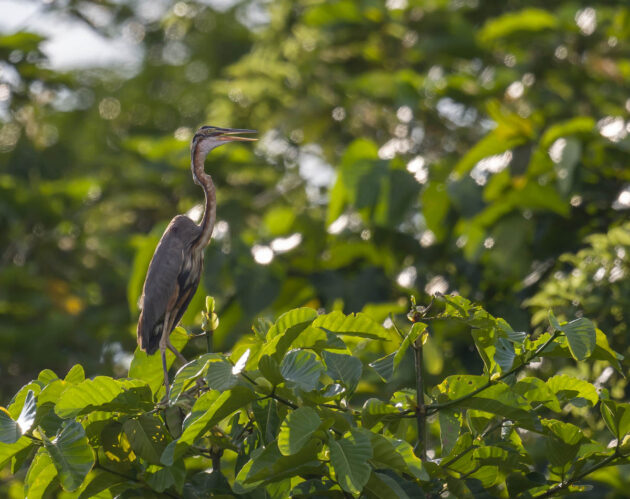
The species name of the Scarlet-rumped Trogon, duvaucelii, makes it sound a bit like it is sponsored by a battery producer but it really just commemorates Alfred Duvaucel (1796-1824), a French naturalist who possibly was killed by a tiger in Madras (source), though another source has him killed by a rhinoceros (in these regions, there are many such choices available). I guess he should have stuck with the substantially less dangerous trogons.
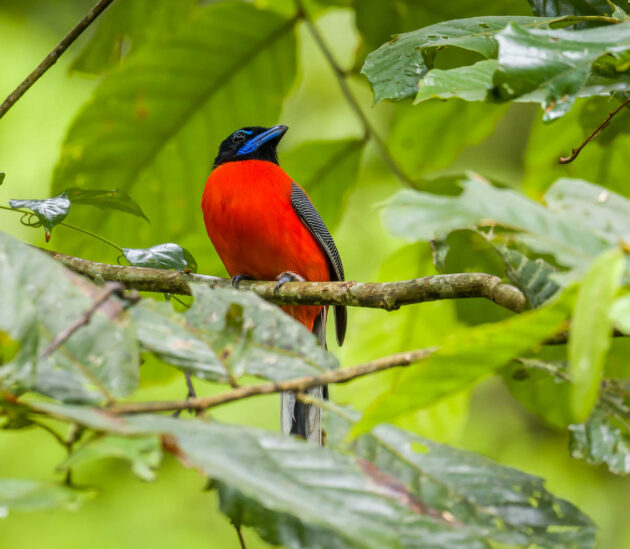
Male (red breast) and female (orange)
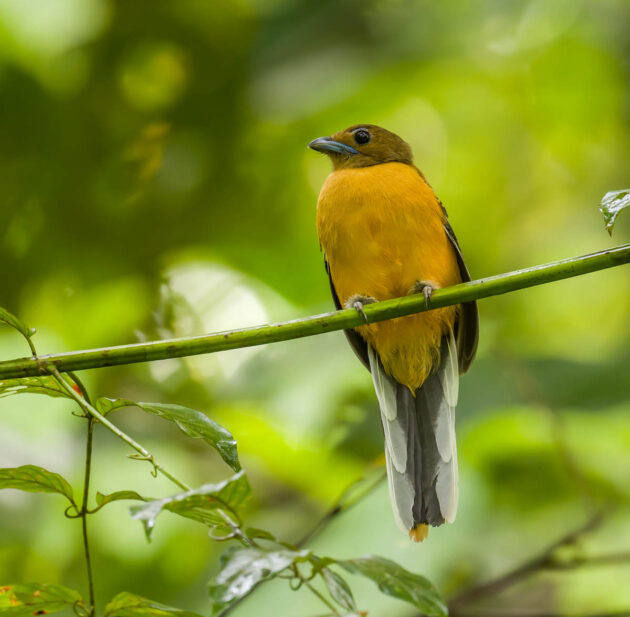
The Scarlet-rumped Trogon is classified as Near Threatened despite being apparently still fairly common on Borneo. It is the smallest of all trogons.
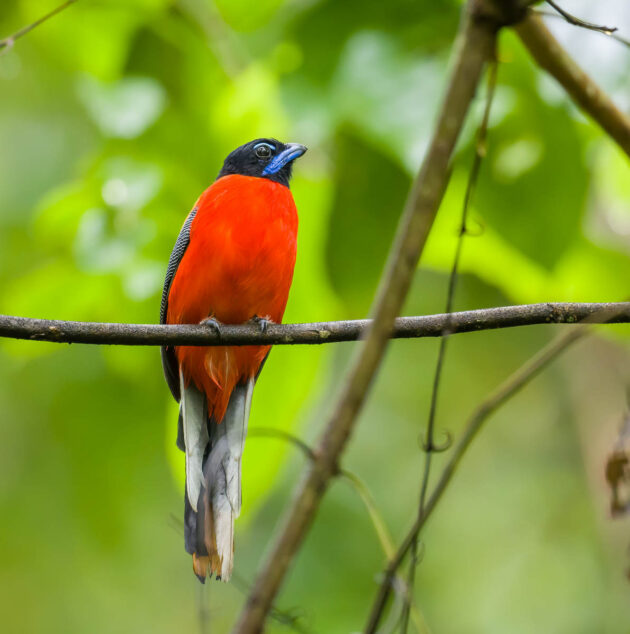
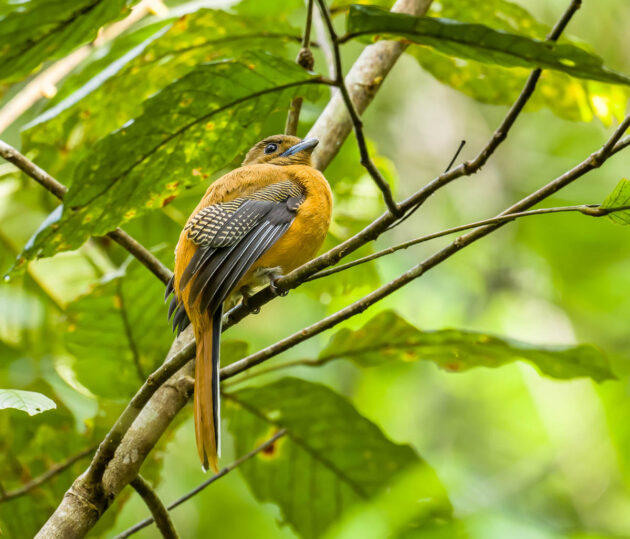
Its blue eyebrow makes it look like it either is constantly doubtful about one thing or other, or a long-time participant in some kind of cosplay.
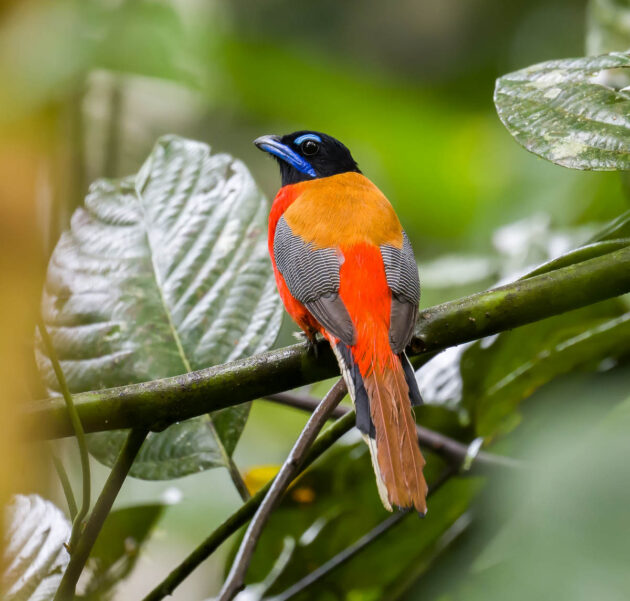
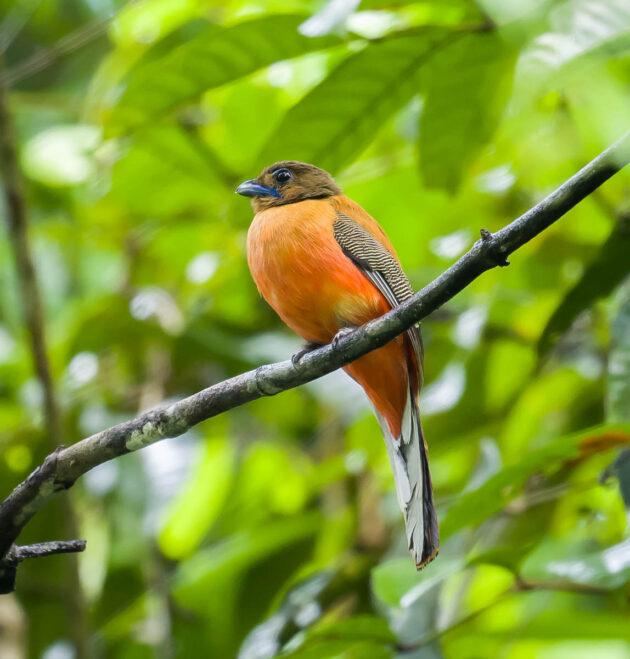
The Common Iora (species name tiphia) apparently gets its name from Tiphys of Greek mythology, the pilot of the Argonauts. And the Argonauts were a band of heroes in Greek mythology, who in the years before the Trojan War accompanied Jason to Colchis in his quest to find the Golden Fleece (please look up for yourself who Jason was, where Colchis is and what the Golden Fleece was).
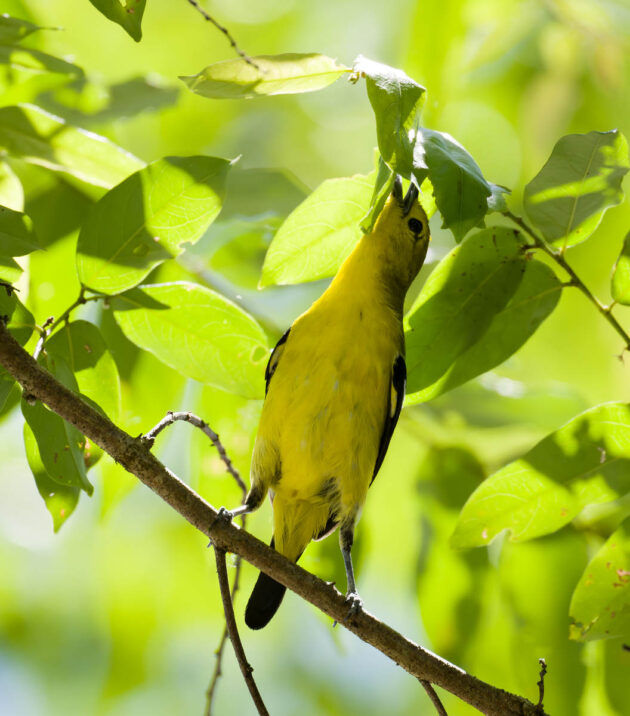
Tiphys died either of a snakebite or of a mysterious illness but he was not killed by either a tiger or a rhinoceros. Lucky him, right? Though he ended up dead anyway.
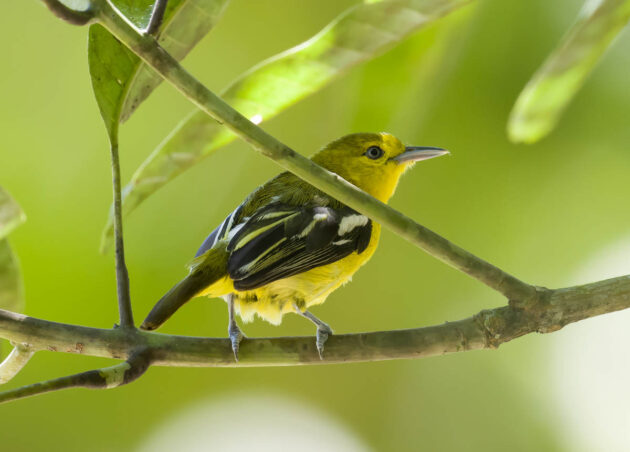
My unfounded guess is that there might be a link between the Golden Fleece and the yellow color of the Iora – goldenfleecii would sound kind of stupid as a species name, and why not show off with your classical education when there is a chance to do so?
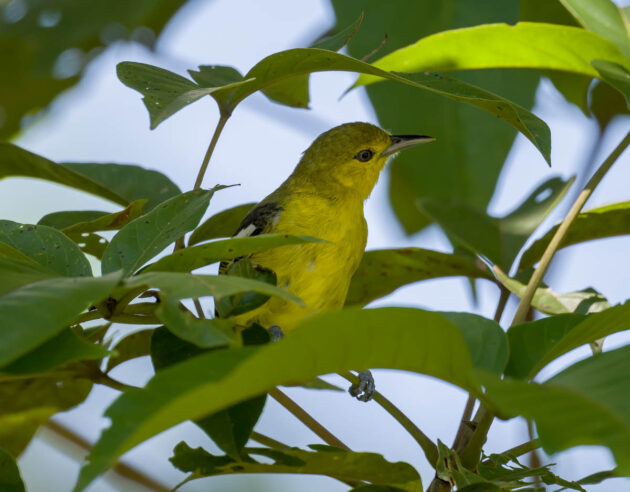
Then, there are raptors. The Bat Hawk mainly eats bats, as the name suggests – in a curiously precise statement, Wikipedia claims that 49.3% of its hunts are successful. Other useful information in the Wikipedia article includes the factoid that it shows very rapid ingestion rates, taking on average 6 seconds for the prey to reach the stomach after capture (motto of this blog: We read Wikipedia for you so you do not have to).
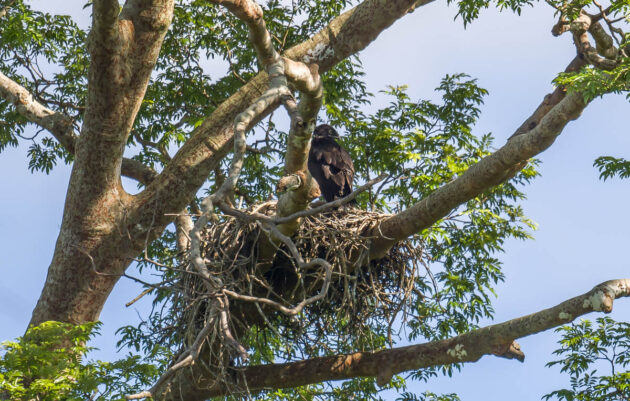
A Crested Serpent Eagle, looking a bit ridiculous after a rain.
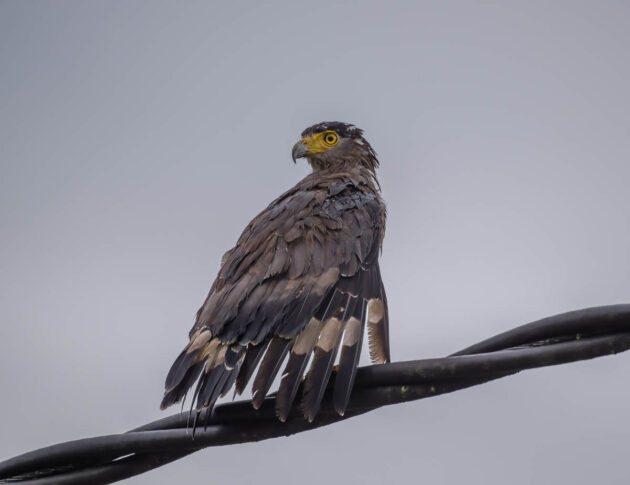
This is a juvenile Grey-headed Fish Eagle, unless it is another fish eagle like the Lesser (the lack of any grey head makes me doubt the identification a bit, but it seems juveniles cannot afford a grey head yet).
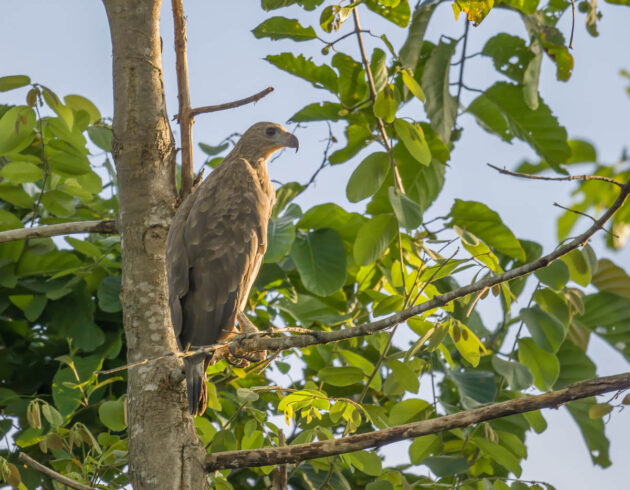
A paper on the Grey-headed Fish Eagle states that it “preferred nesting closer to permanent water than expected” – which makes me wonder who on earth has specific expectations about the preferred nesting distance of the eagle from water. Well, it seems such people exist.
This may be a Jerdon’s Baza – the HBW warns that it may easily be confused with several other raptors, and I am not that good a birder.
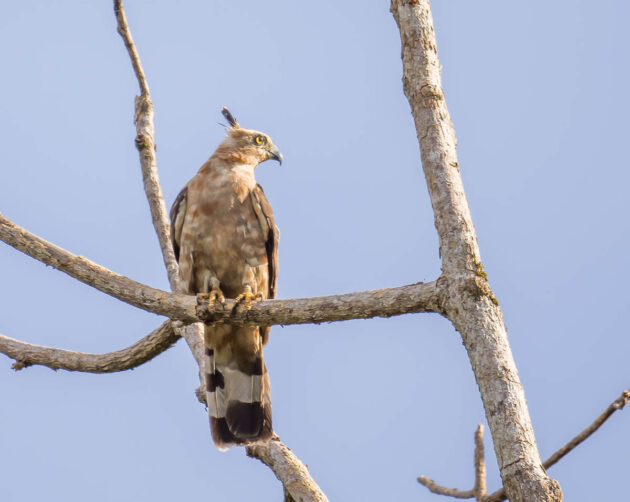
The book “Raptors of the World” describes it as a “sluggish-looking” bird, which strikes me as a bit weird for a raptor.
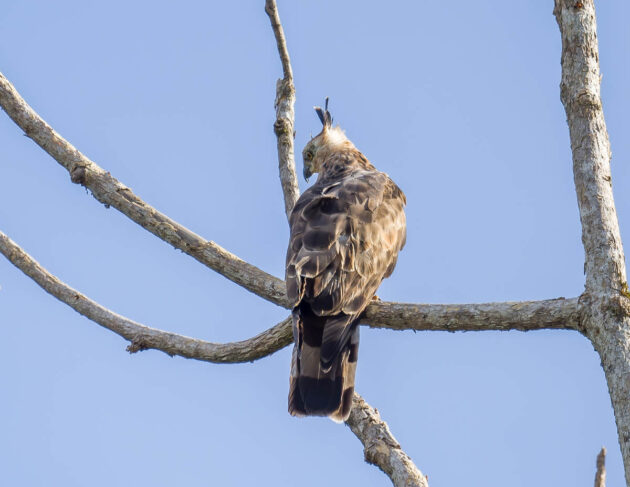
The baza is named after British zoologist Thomas Caverhill Jerdon (1811 – 1872). His Wikipedia entry has its fair share of useless but amusing information on him: “In his personal matters he was said to be careless and forgetful. He often had trouble with his creditors and during the time of his death, he was found to be insolvent. Jerdon has also been noted as being rash. On one occasion, he tried catching a cobra by the tail and got bitten on the tip of finger which he slashed with a pocket knife. He was also nearly strangled by a pet python that he kept.
Another “maybe this is” species: a possible Wallaces Hawk-eagle. I will write more about it in a later post, as I saw it nesting at Sepilok.
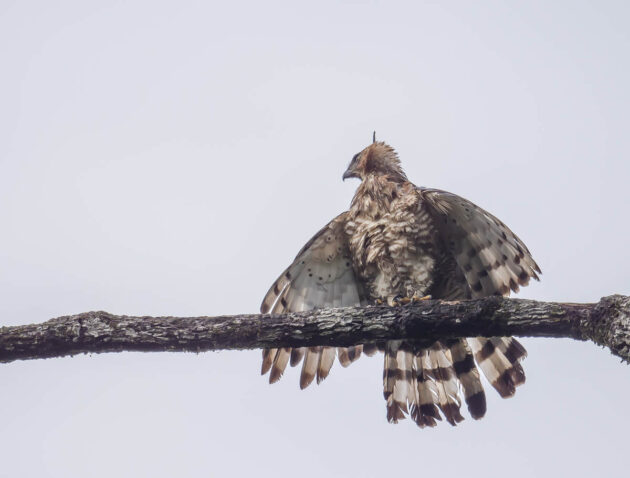
The final bird of this post is the White-bellied Sea-eagle, a species that the HBW fortunately describes as unmistakable. The author of the HBW entry is the same female Thai dentist named in the Woodpecker section – she seems to have an almost scary obsession with plumages, going to great lengths to describe the different ones. I thought this kind of obsession was limited to gull enthusiasts, but it seems I was wrong.
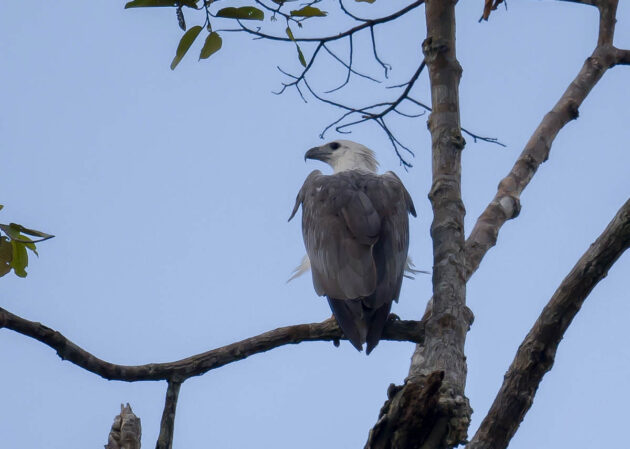
Finally, I am happy to share some useful hints for photographers with you. Here is one: when taking photos of elephants, an 800 mm tele lens is not the best equipment. Even if – as in Borneo – the elephants are comparatively small (they are actually called Borneo pygmy elephants).
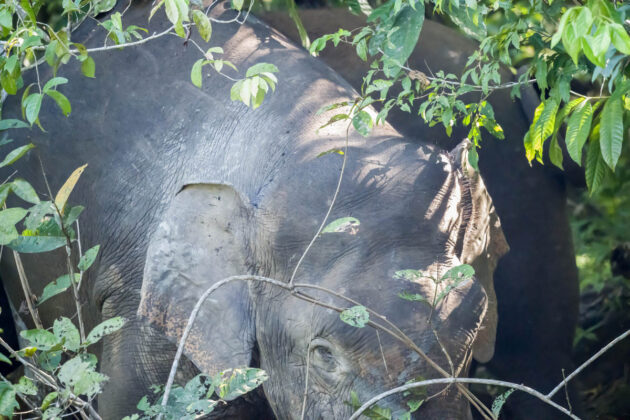
If that triggers you to search your brain for long-lost knowledge and come up with the term “insular dwarfism“, congratulations – you once learned something, even though it was probably a long time ago and does not have any practical use for you now as it is not even frequently asked for in crossword puzzles.
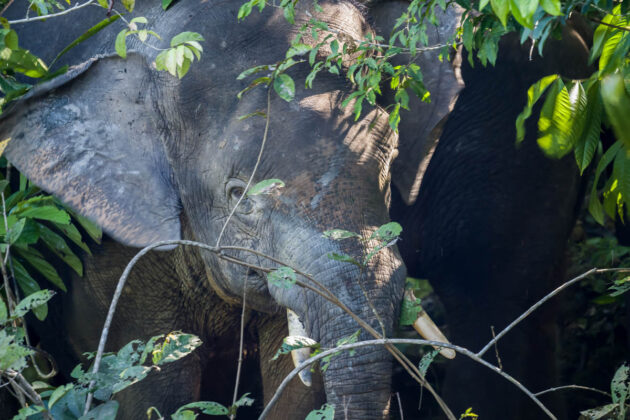
If not knowing this information any longer and thus suspecting you might be suffering from dementia, there are always some other animals around to facilitate assisted suicide.
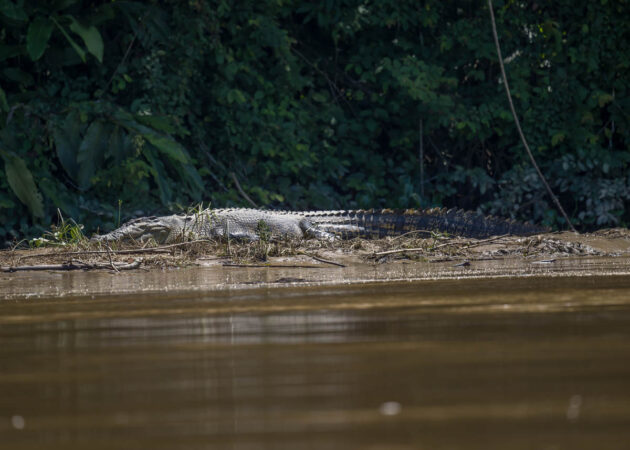
On the other hand, you may take comfort from the fact that you will never be as ugly as this distant relative of yours.
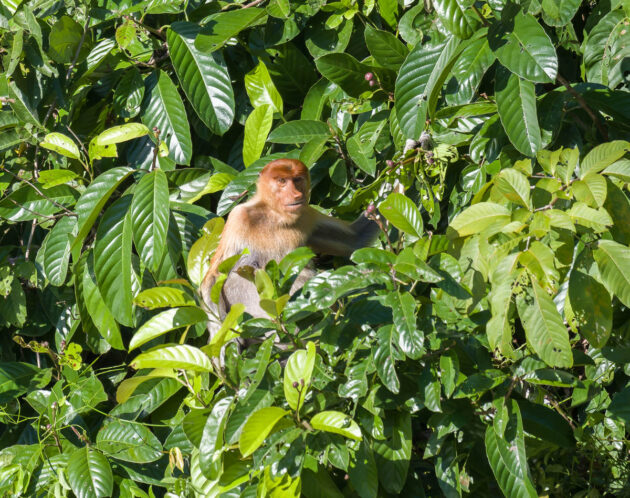
Source link


